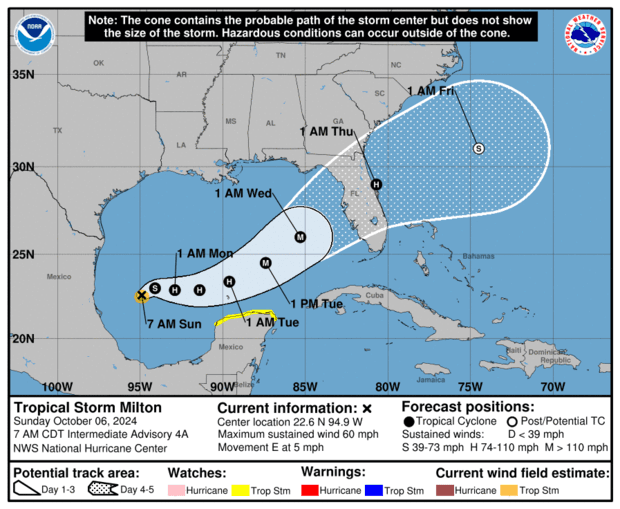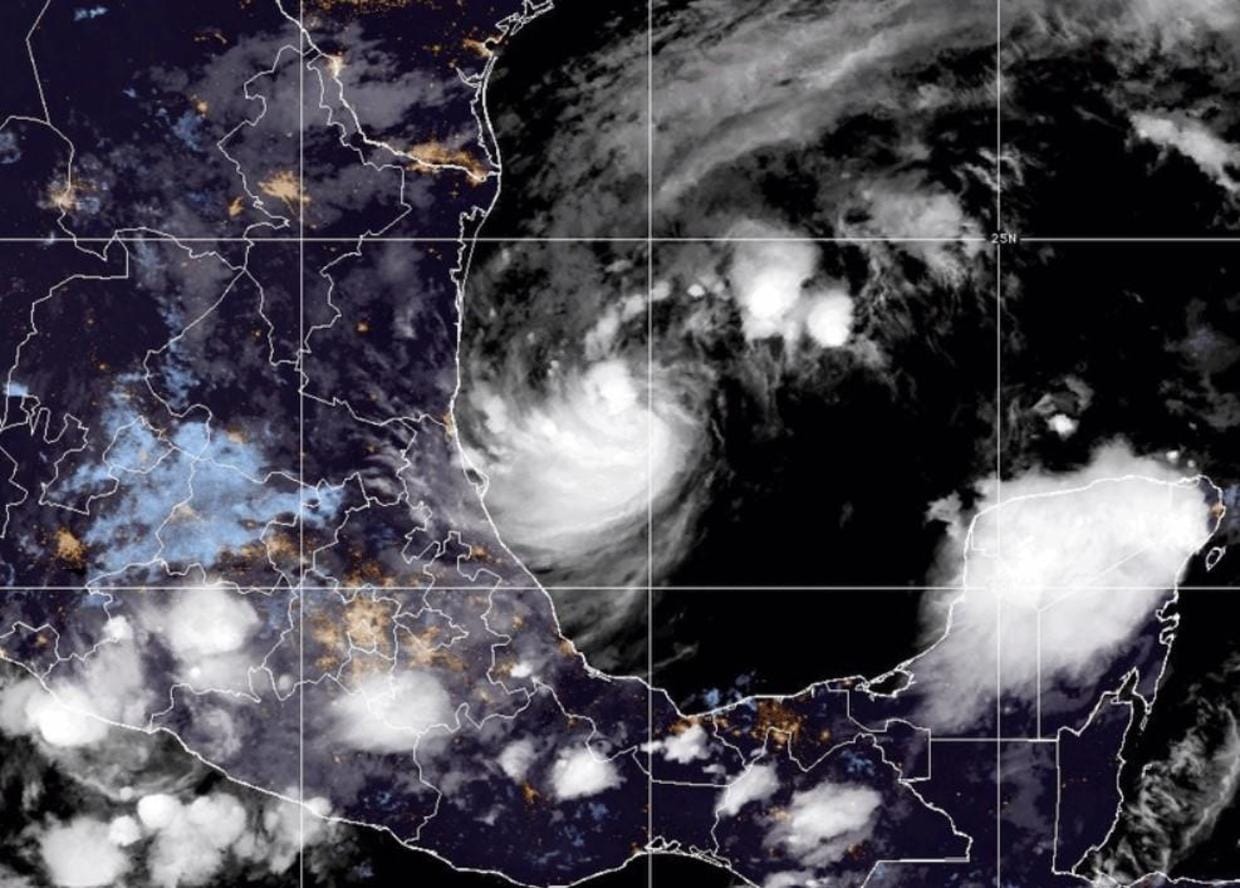Tropical Storm Milton, which is rapidly approaching Florida, has residents on high alert. With its path set to bring potentially severe impacts, from powerful winds to dangerous storm surge, Florida’s west coast is once again preparing for a major weather event. As the Tropical Storm Milton path progresses, concerns are growing for communities already battered by recent hurricanes.
The Growing Threat of Tropical Storm Milton
The National Hurricane Center (NHC) reports that Tropical Storm Milton, which formed near Mexico, is quickly intensifying as it makes its way toward Florida. The storm currently has wind speeds of 50 mph and is moving east at 5 mph. By Monday, wind speeds could exceed 110 mph, indicating the storm’s rapid strengthening. Forecasts show Milton’s path crossing Florida from east to west, with a likely landfall near Tampa Bay.
According to the NHC, there is a significant risk of life-threatening storm surge and damaging winds. The latest hurricane tracker for Tropical Storm Milton projects that the storm will hit Florida’s Gulf Coast by Wednesday, potentially as a Category 3 hurricane with wind speeds reaching up to 120 mph.
Tropical Storm Milton Path: Potential Impact Areas
Residents across Tampa Bay, Cedar Key, and Naples have been urged to prepare, with hurricane watches expected to be issued. The Tropical Storm Milton path covers a broad area, with parts of southern Georgia, Alabama, and the Carolinas also expected to feel its impact.
More Like This: Hurricane Milton: Could the U.S. face another major storm?
In addition to strong winds, the storm will bring heavy rainfall and the risk of flash flooding to already saturated areas. Cities like Miami, Orlando, and Tampa could see up to 8 inches of rain through Thursday. Meanwhile, Milton spaghetti models suggest varying impacts across Florida, with the storm forecast to cause severe flooding in some low-lying areas.
Lessons from Recent Storms

This storm arrives on the heels of Hurricane Helene, which devastated the southeastern United States just days ago. Helene caused widespread destruction, leaving 229 people dead across six states and rendering many areas without power.
With Florida still recovering from Helene’s 500-mile trail of destruction, Milton poses a fresh challenge to the already weakened infrastructure. According to THE National Oceanic and Atmospheric Administration (NOAA), the storm’s proximity to warm sea temperatures may cause Tropical Storm Milton to strengthen rapidly as it nears the Gulf Coast.
Local officials are working tirelessly to prepare for Milton’s landfall. In a recent statement, Florida Governor Ron DeSantis declared a state of emergency for 35 counties, urging residents to follow evacuation orders. The Tropical Storm Milton NOAA projections reinforce the need for communities to take immediate precautions.
Preparing for Milton’s Landfall
With the Tropical Storm Milton path now clear, it’s crucial for Florida residents to be prepared. As of Sunday, Milton has wind speeds of 60 mph and continues to strengthen. The Milton spaghetti models show that the storm could cause severe storm surge along the coast, with estimates of up to 10 feet of water in some regions.
More Like This: North Carolina Nurse Reveals Massive Disaster After Hurricane
Florida’s emergency teams are actively preparing sandbag distribution sites and staging debris removal efforts. Cities like Fort Myers Beach and Sanibel have already begun advising residents to clear drains and prepare for potential evacuations. The hurricane tracker for Tropical Storm Milton suggests that winds and rain will begin impacting coastal areas as early as Tuesday night.
Residents must take this storm seriously. While the exact strength of Tropical Storm Milton at landfall is still uncertain, the risk of flooding and destructive winds remains high. As Florida continues its recovery from Helene, the arrival of another storm reminds everyone of the importance of staying informed and prepared.








